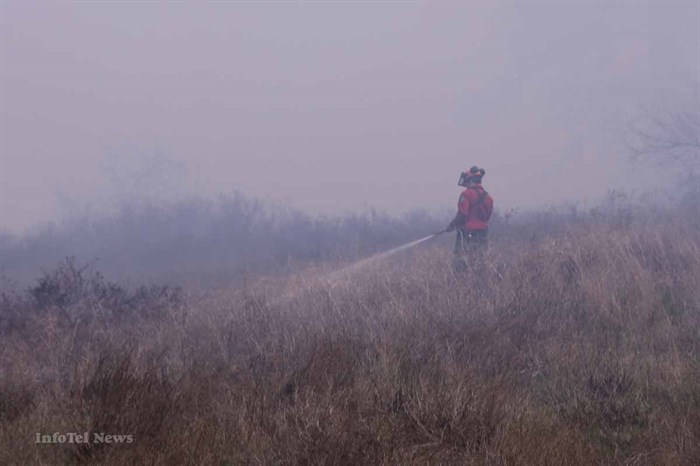
May was a typical wildfire season in the region with just 13 fires reported.
(JENNIFER STAHN / iNFOnews.ca)
October 31, 2022 - 6:00 AM
It’s still too early to say how next year’s wildfire season may look but a La Niña weather system may bring more rain, snow and lower temperatures this winter and spring.
“It is a waiting game to see how much those storms actually develop, which could bring above average precipitation and help with the current drought conditions and wildfire starts early next year,” said B.C. Wildfire Service information officer Forrest Tower.
Environment Canada’s weather forecast shows December’s precipitation will likely be normal or above normal. The Farmers’ Almanac is also predicting a brisk winter in B.C.
Multiple communities across B.C. are currently experiencing extreme drought conditions.
The Lower and Upper Thompson regions are currently in a level three drought, where adverse impacts are possible while the Okanagan is in a level two.
With less precipitation and dryer conditions than normal this month, the wildfire season is lasting longer, with the B.C. Wildfire Service seeing larger wildfires than usual and more fire starts.
A wildfire near West Kelowna quickly grew to more than 50 hectares in size after it was discovered earlier this month. Late-season wildfires have also prompted air quality advisories in the Interior.
“(Fire) seasons going into October isn’t unusual, we’ll have fire starts in October. We’ve had more fires in October than normal but that’s very much because there’s such a high drought code," Tower said.
“We’ll need pretty significant precipitation to affect that going into the fall,” Tower said, adding colder weather will bring an end to the official fire season but they expect to see fire starts until then.
This season saw fewer hectares burned than in previous years. The provincial 10-year-average is 433,186 hectares, while this year only saw 1,746 starts with about 130,000 hectares burned. Last season was a record-breaker in the Kamloops Fire Centre with 496,983 ha burned.
“I think the difference in this season to past seasons is that we didn’t see any fires get to a crazy, significant size,” Tower said.
The likelihood of a zombie fire or a holdover fire — a fire that burns deep in organic soils and rises again the following spring — depends on the weather.
For zombie fires to occur, it typically requires a very large fire or a fire burning deeply into the ground and Tower said the fire service didn’t see those fires at the scale this year compared to previous years.
READ MORE: Past summer's blazes in Thompson-Okanagan may rise again as zombie fires in spring
This fire season had a late season with the wet season in early summer and then a busier season in a shorter period of time, he said.
“We had a lot of fires, more than the 20 or 10-year average, but we kept them small and obviously a lot of wildfire suppression to credit but also those weather patterns helped us out a lot this year.”
However, the wildfire service won’t be making any seasonal outlooks for the next season until snowpack data is released from Environment Canada in the next few months.
To contact a reporter for this story, email Carli Berry or call 250-864-7494 or email the editor. You can also submit photos, videos or news tips to the newsroom and be entered to win a monthly prize draw.
We welcome your comments and opinions on our stories but play nice. We won't censor or delete comments unless they contain off-topic statements or links, unnecessary vulgarity, false facts, spam or obviously fake profiles. If you have any concerns about what you see in comments, email the editor in the link above.
News from © iNFOnews, 2022